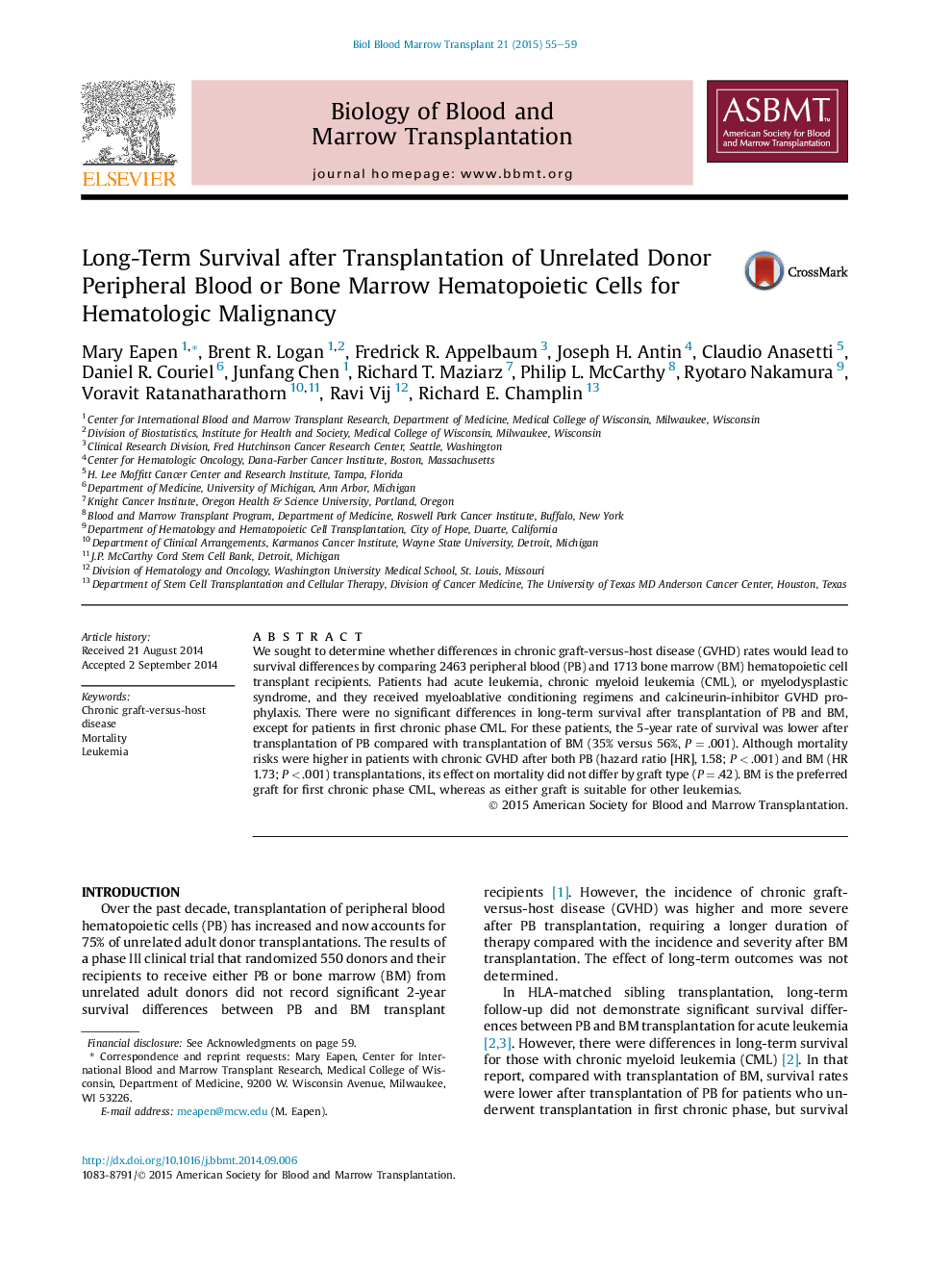| کد مقاله | کد نشریه | سال انتشار | مقاله انگلیسی | نسخه تمام متن |
|---|---|---|---|---|
| 2101861 | 1546272 | 2015 | 5 صفحه PDF | دانلود رایگان |
• Comparable long-term survival after peripheral blood and bone marrow transplantations for acute leukemia.
• Lower long-term survival after peripheral blood transplantations for chronic myeloid leukemia in first chronic phase
• Effect of chronic graft-versus-host disease on survival did not differ by graft type
We sought to determine whether differences in chronic graft-versus-host disease (GVHD) rates would lead to survival differences by comparing 2463 peripheral blood (PB) and 1713 bone marrow (BM) hematopoietic cell transplant recipients. Patients had acute leukemia, chronic myeloid leukemia (CML), or myelodysplastic syndrome, and they received myeloablative conditioning regimens and calcineurin-inhibitor GVHD prophylaxis. There were no significant differences in long-term survival after transplantation of PB and BM, except for patients in first chronic phase CML. For these patients, the 5-year rate of survival was lower after transplantation of PB compared with transplantation of BM (35% versus 56%, P = .001). Although mortality risks were higher in patients with chronic GVHD after both PB (hazard ratio [HR], 1.58; P < .001) and BM (HR 1.73; P < .001) transplantations, its effect on mortality did not differ by graft type (P = .42). BM is the preferred graft for first chronic phase CML, whereas as either graft is suitable for other leukemias.
Journal: - Volume 21, Issue 1, January 2015, Pages 55–59
